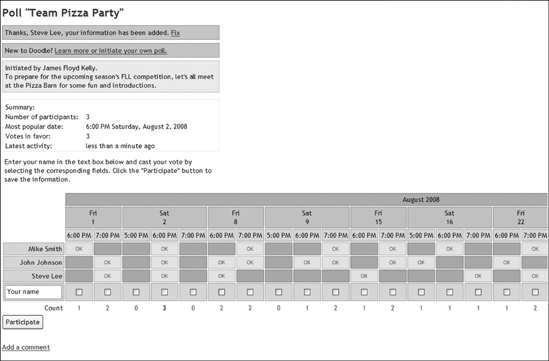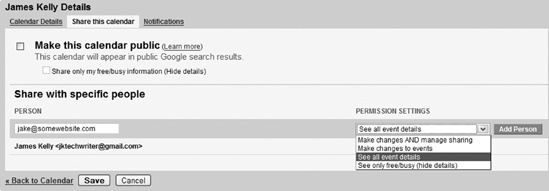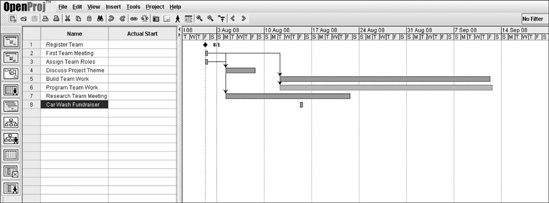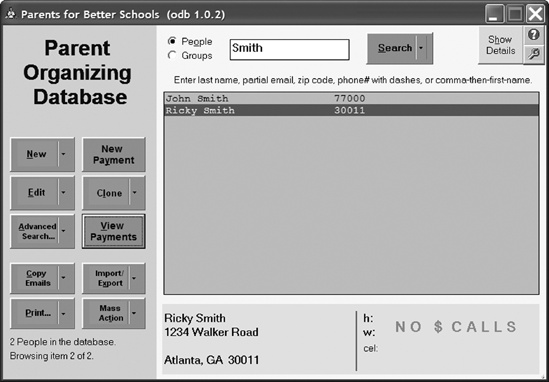In this chapter, we offer some advice that will hopefully clear up any misunderstandings about what a coach should and should not do during an FLL season.
Opinions from previous FLL coaches vary from “Not too bad—the kids did all the real work” to “Herding cats is an easier job.” The ideal experience for a coach will ideally fall somewhere in between. Most coaches probably agree, however, that coaching is one of the hardest jobs you’ll ever love.
During a competition season, coaches often find that the task of scheduling team meetings and competitions becomes a job in itself. Communicating with students, parents, and sponsors regarding setting up meeting times, coordinating rides, and simple fund-raising activities can consume much of a coach’s time, so we offer some suggestions for software and online applications that are sure to ease a coach’s stress (a bit) and bring some peace of mind.
Finally, find real-world advice from coaches scattered throughout the chapter. By the time you finish this chapter, we hope you’ll breathe a little easier. Let’s get started.
There are duties that a coach should reasonably be expected to contribute to an FLL team, and there are actions that fall outside a coach’s responsibility.
The FIRST LEGO League Coaches’ Handbook sums up the division of labor between coach and kids with this statement in “Coach’s Promise” on page iii: “The kids do . . . all of the programming, research, problem solving, and building. Adults can help them find the answers, but cannot give them the answers or make the decisions.”
Remember that FLL is about the kids, not the coaches. Of course, it’s great when a coach learns something new, but team energies should always be directed at expanding and enriching each student. Give your team room to dig deeper, go off on tangents, and learn. For the Robot Game portion of the competition, coaches should resist offering help with programming and testing the robot. Coaches, mentors, and parents can give general instruction but not specific solutions. The coach should invite mentors to speak to the team, pointing to resources such as books or websites, but when asked whether a particular program or technique will work, a good coach’s answer should be, “I don’t know. Let’s try it!”
Note
Coaches should encourage students to build test robots based on designs from books and the Internet, but the best source of building instruction is in the NXT-G software. Coaches are encouraged to do their own research so they, too, become knowledgeable about the chosen Project and Robot Design and can provide encouragement when the team gets stuck on a problem. Team members will get frustrated when you don’t provide answers, but the feeling of satisfaction when they find the answers is always greater when they realize their success is all their own.
Perhaps most important, team members should make all decisions on their own, without their coach. This includes voting on items such as Robot Design or the Project’s subject. Coaches can provide an opinion if asked, but not specific solutions to problems. Coaches should remember, though, that their opinion may carry more weight among the team members than the opinions of the other members, and they should always encourage students to make their own decisions. If asked for a decision on a particular topic, coaches should in most cases reply, “As coach, I cannot make that decision for you.”
The Coaches’ Handbook lists FLL values that all team members should adhere to—and not just during the FLL season. These values can benefit team members not only during competition, but also throughout their lives. These values are the following:
Encouraging a team to honor these values is the coach’s most important duty. Respecting others, behaving appropriately during and outside team gatherings and competitions, making ethical decisions, and similar behaviors are all things the entire world could benefit from.
A coach can best judge a team’s success at the end of the season not only by the number of trophies won but also by the impact the team had on its members, other teams, and the community that supported it. You hear the phrase gracious professionalism a lot during FLL competitions. Many teams adopt this phrase as their motto, recognizing that FLL is not just about competition; it’s a way of being. Coaches should understand the FLL values, integrate them into their management style, and remind the team members always to remember and adhere to the values.
Understanding the rules and values that a coach must abide by is important, but how can you manage all of the day-to-day activities that a coach needs to attend to, such as scheduling the next meeting, arranging transportation, finding volunteers to help with the fund-raiser, and so on? A coach’s work is never done.
Fortunately, the Internet is full of useful tools that can simplify a coach’s life and help keep the team organized. This chapter briefly covers Doodle and Google Calendar and lists some additional resources.
Scheduling FLL meetings and events can be a real challenge because you must consider the schedules of the team members, parents, mentors, and an assistant coach or two. Thankfully, Doodle (http://www.doodle.ch/) makes it easy.
As of this writing, Doodle is a free online tool for scheduling meetings or appointments. After setting up an account, use Doodle to select possible meeting times for an event. Doodle emails your invitees with proposed dates and polls the members for their choices. Once all of the votes are in, Doodle picks the day and time that works for most people. Here’s how it works in a nutshell:
Create a poll by giving it a name. Examples are “Best time for Pizza Party?” or “Time to gather for Saturday’s scrimmage?”
Fill in details such as the purpose of the meeting, and provide your name and email address.
Select the month and year for your event. Figure 8-1 shows a sample with possible dates highlighted.
Enter time options. (For each day you select as an option, you can provide up to four times.)
You will receive an email with a link to forward to the invitees. When the invitees click the link, they will arrive at a screen like the one shown in Figure 8-2.
As invitees respond and provide their availability, Doodle offers the best day and time along with the largest number of attendees (Figure 8-3).
As the poll administrator, you will receive an email every time an invitee responds to the poll. Also, as new participants submit their information to the poll, they can view the most popular days and times selected by previous respondents; this is a helpful feature that can encourage visitors to select days and times that are already showing good potential.
While Doodle cannot guarantee to find a day and time that works for every invitee, it does give a coach the ability to pick the date that will have the most participation without having to make lots of phone calls or send numerous emails.
Another excellent tool for coaches is Google Calendar. Coaches can use it to create an event schedule and make it publicly available or restrict access only to invitees. Google Calendar has a ton of features, and although we can’t cover them all, we do want to cover a few basics that will get you started.
Sign in to Google Calendar at http://calendar.google.com/ (if you don’t already have a Google account, click Create an account and follow the instructions).
When Google Calendar opens, you will be viewing it in Week mode. Also available are Day, Month, 4 Days, and Agenda (click Help in the upper-right corner of the screen for more information).
Press the M key on your keyboard; this changes the calendar to the monthly view (Figure 8-4). For our examples, it will be easier to work in this view.
To enter a new event, click a specific day. This opens a small box in which you can type a description of your event (Figure 8-5). Click the Create Event button when you’re finished. (If you press Q instead, a smaller box will open, allowing you to enter event information; type the date and time and it will place the new event accordingly.)
The new event will be entered on the calendar. In your description, you can specify the time and it automatically enters the event at the appropriate time in Day view.
Navigate forward and backward in any view (Day, Month, and so on) using the N and P keys (next and previous), and enter additional events as needed.
Once you’ve created the calendar, you can share it with team members, parents, mentors, and sponsors. Anyone wanting to view the calendar also needs a Google account; you have an opportunity to invite them (using an emailed link) to sign up, view your calendar, and even add items to the calendar. The following tells you how:
On your Google Calendar web page, click Settings in the upper-right corner of the screen.
The Calendar Settings window will appear, showing the General screen. Click the Calendarslink.
Click Share this calendar.
On this next screen (Figure 8-6), you need to enter the email address of each person who will have access to this calendar. For now, leave the drop-down menu option as See all event details, and click the Add Person button (this is where you can give someone access to make changes to the calendar by selecting Make changes to events).
Continue to add email addresses (clicking Add Person after each) to add more individuals. Click the Save button when you are done.
An alert message will then inform you whether the persons added should be invited to create Google Calendar accounts. When you click the Invite button, they will be sent invitations to sign up and view your new calendar.
And that’s it! You now have a calendar that parents, team members, and anyone else you care to invite can view. It’s a great tool for making sure that everyone knows about scheduled team meetings, competition dates and times, and more.
Once you create a calendar, there are some really fun and useful things you can do with it. Two of our favorites are as follows:
For a new event, enter an address that includes a zip code. When you or a visitor to the calendar click the event and the small Map link, Google Maps will allow you to print a map to that location!
From your cell phone, send a text message to GVENT (48368) with a short description and date (a time is optional), and your calendar will add the event and send you a reply text message that the calendar has been updated. This is a great feature for adding items on the fly when you’re not at a computer. (Keep in mind that this only works if your cell phone plan supports text messaging to short codes, and standard text message rates will be added.)
If you’re not familiar with software such as Microsoft Project, you might be surprised at the features these kinds of applications offer. Project management software allows you to enter team project tasks (such as First Team Meeting or Test First Robot Design), set a start/end date or task duration (five days, for example), and track milestones and key deliverables for your team. You can also build in set dates (such as Regional Competition, November 8) and define tasks that the team must complete before other tasks (called dependent tasks).
By configuring your FLL season schedule using project management software, you can determine at a glance if your team is on schedule. Our choice is OpenProj (http://www.openproj.org/), shown in Figure 8-7. Click the Demonstrations link to see some examples of how to use OpenProj and click the Documentation link for help.
Our last application, Organizers Database (ODB), is a simple tool that allows you to track donations and contributor information. After installing the software, simply add contributors to the database using the New button (as Figure 8-8 shows). You can include contributor information such as mailing address, email, phone numbers, individual or organization name, and more. When a business or individual makes a donation, use the New Payment button to append the record with information on the amount contributed and the date of their contribution.
Organizers Database can also track donations of time or equipment. At the end of the FLL season, the software makes it easy to filter and print out names and addresses. The team members can then send thank-you cards to the people who’ve supported them.
You can download Organizers Database at http://organizersdb.org/home for free. A user’s guide that provides information on additional features also comes with the download.








